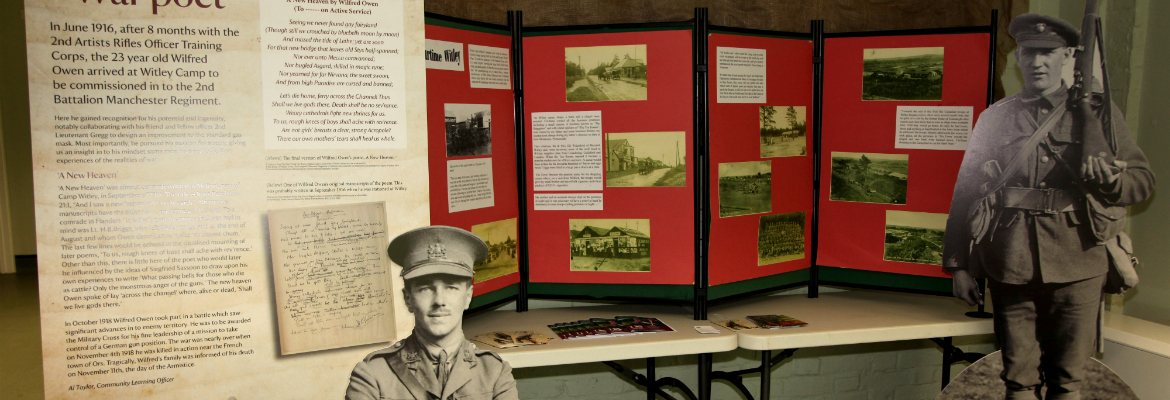We have strong links with historical sites across the UK and we understand how tricky it can be to source the perfect image.
One of our latest projects with long-term client the National Trust was to create a display at The Witley Centre. This included sourcing an image of famous war poet Wilfred Owen, which proved to be more challenging than we expected.
The centre is based down on Witley and Milford Commons and each year it holds an open day with the aim of raising people’s awareness of the property as a resource to hire out.
It’s a fairly modern building so it doesn’t have much history in itself. However, there were large army camps based around the area in both World Wars and Wilfred Owen was based at Witley Camp during World War 1 where he is recorded to have written ‘A New Heaven’ just before being sent over to France.
It’s a nice story and since we are in the WW1 centenary year, National Trust Education Officer Al Taylor thought it would make an interesting display to use on their open day and also for educational purposes.
“We wanted to put together a display that included a life-size cut-out of Wilfred Owen, a photograph of the original manuscript for ‘A New Heaven’ and a shot of soldiers advancing through barbed wire. We also wanted a separate cut-out of a British ‘Tommy’ standing to attention,” says FdK’s Steve Foster.
Getting high resolution images for this kind of display would normally be fairly straightforward, but that isn’t always the case with historical images.
“If you are looking for a specific image, such as a picture of Wilfred Owen in officer’s uniform or soldiers standing to attention, while there are hundreds of pictures in libraries such as the Imperial War Museum, it’s amazing how hard it is to find the perfect shot,” says Steve.
What makes it even more complicated is that even once you find the perfect shot, there is another set of hurdles.
Quality is usually the main problem as in most cases the image has come from a print which might in itself be blurred, damaged or grainy. If you need to enlarge the image for use on a display (like our life-size Wilfred Owen display) then you usually end up having to clean up and retouch the more obvious blemishes before you can use the image.
Once you have found a set of good quality images, you then need to consider copyright.
It’s always important to go through the correct channels, which can sometimes be a slow task, but an essential one.
“I began by talking to the Bodleian Library about getting hold of the Wilfred Owen image, however, in the course of looking for images of the British ‘Tommy’ and the trenches on the Imperial War Museum website, I actually found the same image of Wilfred Owen. I thought it would be easier to obtain all the images from there and it definitely saved me some time,” says Steve.
The IWM Library still advised Steve to get final approval from the Wilfred Owen Estate so he went back to the Bodleian Library to get their approval and also the correct credit lines for the Wilfred Owen and manuscript images.
Sometimes this process can be very quick and easy but the key is to be patient and above all, do not try to cut corners.
“It’s not worth the risk of breaking the law and receiving a call from a copyright lawyer somewhere down the line. If you go through the official channels, generally the people you talk to will be very helpful and will always advise you as the IWM and Bodleian Library did for us,” says Steve.
Just remember that when you do get permission, be sure to get it in writing, be it letter or email!
It’s also worth noting that if you are sourcing the image for a charity, as was the case with the National Trust, or if the usage is for non-profit, then it is worth mentioning when you talk to your source as they will often give you reduced rates.
And who doesn’t like reduced rates!
